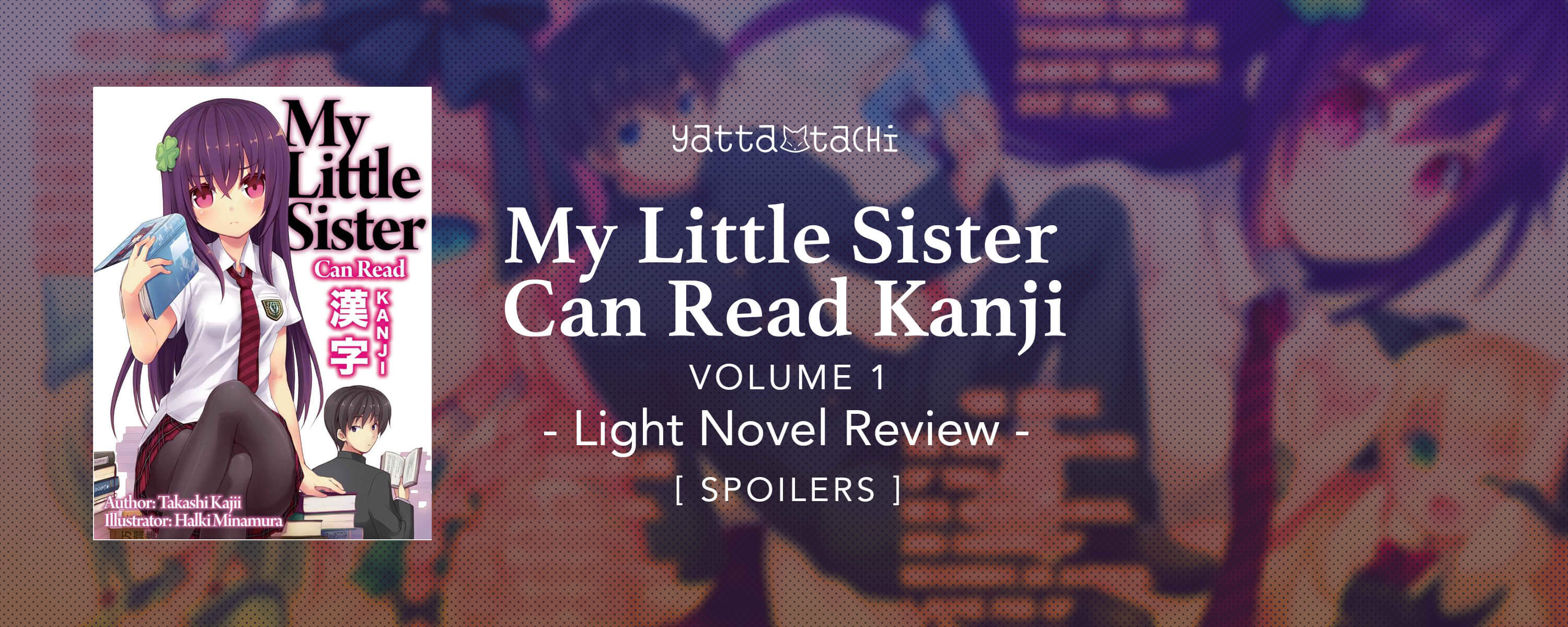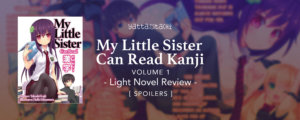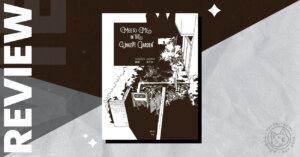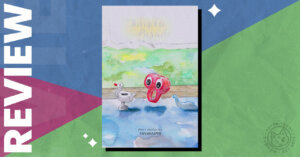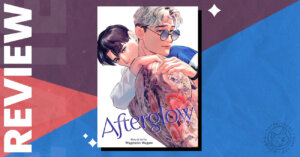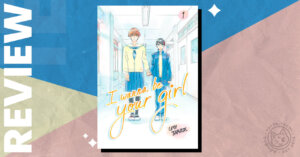From looking at the title, I thought this would a heartwarming story about how a little sister can read kanji at a very young age, or maybe it’s another series where the main character is trying to be a novelist and little sisters and kanji are somehow involved. I wasn’t TOTALLY wrong, but before diving in, I want to give an overview of the Japanese writing system for anyone who isn’t familiar. Compared to English, which is composed of a twenty-six letter alphabet, the Japanese writing system is made up of three parts: kanji, hiragana, and katakana. All of them are seamlessly used when writing and reading in Japanese.
The Japanese Writing System
Kanji (漢字) originated as Chinese characters that were adopted for use in the Japanese writing system. They are used as an easy way to distinguish words, due to a lack of spaces in Japanese, and are also used to differentiate words that sound the same when spoken but are represented by different kanji when written.
Hiragana (ひらがな) is one of the syllabaries used where each of the 46 base characters in the system represent a different type of sound (5 singular vowels, 40 consonant-sound combinations, and 1 singular consonant).
Katakana (カタカナ) is very similar to hiragana, except this syllabary is mainly used to write loan words or names that can’t be represented using kanji.
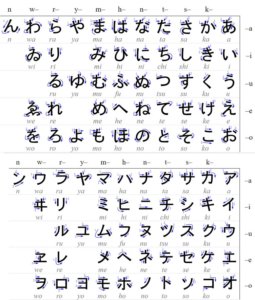
For example, consider the following sentences:
この漢字は分かりますか? (Do you understand this kanji?)
この感じは分かりますか? (Do you understand this feeling?)
漢字 (Chinese characters) and 感じ (feeling) are both read and spoken as かんじ (kanji), so without the use of the adopted Chinese characters to help differentiate, the sentence would look like this:
このかんじはわかりますか?
This makes it difficult to figure out what the sentence is trying to say without any context.
Going back to the story, it turns out that I wasn’t too far off about my expectations for the series. The main character is indeed an aspiring novelist and his younger sister can indeed read kanji… but there are a few twists. Gin Imose is not your typical modern-day light novel protagonist. He is a citizen of 23rd century Japan, an era where my entire explanation about kanji is absolutely obsolete.
There wasn’t an apocalypse that completely devastated society and left Japan in a primitive culture state. It’s just that by the 23rd century, things have changed so much in Japanese culture, literature, and the writing system that kanji has been phased out, leaving only hiragana, katakana, and weird symbols. This occurred because of a “moe boom” that turned Japan into a hub of cute anime girls; where the prime minister is 2D and the highest form of literature involves panty flashes and non-blood-related brothers and sisters in ridiculous situations… soooo, maybe it was a cultural apocalypse instead?
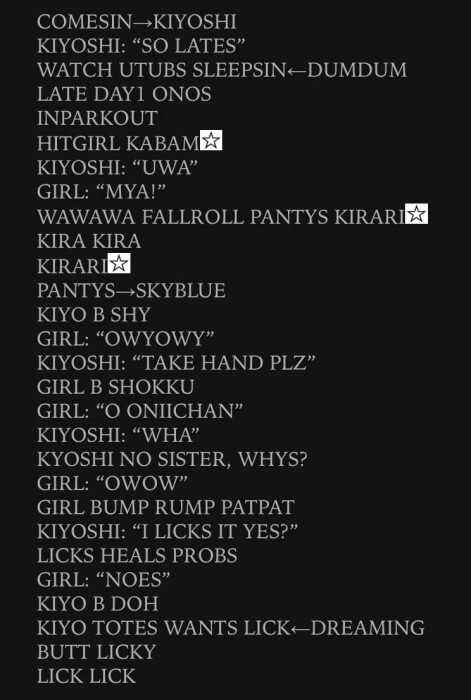
The Good
The fastest and easiest way to summarize My Little Sister Can Read Kanji is probably to say, “it’s so bad that it’s good.” Reading through this volume, I felt that everything was so ridiculous that the author couldn’t possibly be serious about writing this type of story (though I’ve seen how ridiculous light novels can get).
Starting with the fact that kanji is now considered ancient text and that only the truly studious and gifted academics can read it, I felt a short resonance with the main character because, as someone who has been learning Japanese, I am fully aware of how difficult kanji can be. That empathy was short-lived when the story arrived at the point where Gin and Kuroha, the main character’s little sister who can read these “ancient” kanji, meet Gai Odaira, a bestselling author of little sister novels and pretty much a complete degenerate pervert. It gets better (or worse?) when it’s revealed that the reason for the drastic cultural shift is because of a famous work titled “I Want to Have Onii-chan’s Baby.”
Somehow, it gets even more ridiculous when time travel is randomly introduced and takes our core group of characters back to the 21st century (our present-day), where they meet and bond with a girl who inevitably winds up being the inspiration for the heroine of the aforementioned title. They then inevitably time travel back to the future, only to discover that their actions in the past have completely reverted 23rd Century Japan onto a path that the reader is more familiar with, due to the influence of a mysterious and unnamed figure.
If you’re wondering why all of this is being written in the pros section of the review, it’s because I would like to think that the levels of ridiculousness seen in this story gives it a decent entertainment value for those readers who can sit back and experience this wild ride. I also want to cling to a small hope that this series is the author trying to write a commentary about the current state of light novels, where there is an overabundance of stories with pseudo-incest themes, ridiculous plot points that are poorly expanded on, flat characters, and convenient plot devices (such as isekai, or time travel in this case). If, somehow, that is the case, I think it would be a brilliant read, just to shock readers into considering the direction that the light novel medium is heading towards.
The Bad
It seems like I covered the main points of the negatives section in the previous paragraph, which only further supports my earlier statement of, “it’s so bad that it’s good.” The plot can be entertaining but overall, it doesn’t seem like anything special so far except for its quirky points about the Japanese writing system. All the parts about little sisters, panty flashes, and degenerate light novels will probably turn most readers away, but if you’re able to look past that, there might be a few laughs and a lot of shocked expressions in store. The most reasonable character introduced so far is Kuroha, who does not hesitate to insult or disparage her older brother and Gai Odaira – due to either their seemingly crazy, but apparently normal for that time period, mindset, or their rather creepy actions. The illustrations are pretty average and don’t really pop out compared to other light novels I’ve seen, but they are serviceable and give some visual aspect to the characters we are reading about.
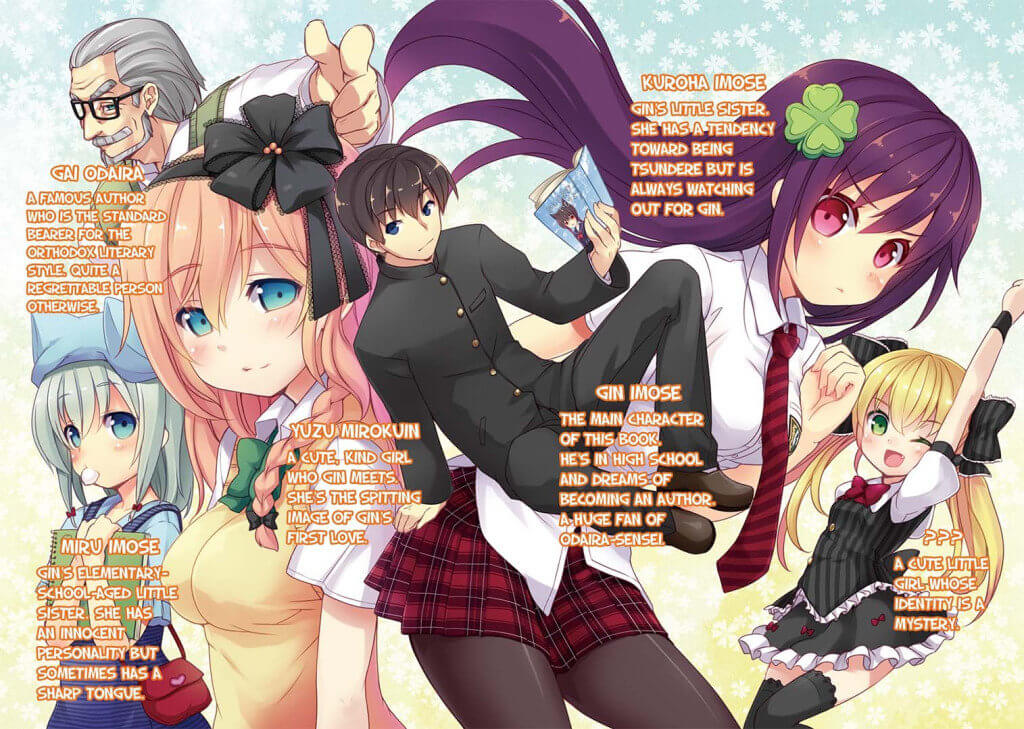
Other Personal Thoughts
Overall, I thought this volume opened up with an incredulous plot full of ridiculous elements, but it ended up being a mostly average read. There wasn’t much of a deep, emotional response to it, but it certainly got me thinking about a world where kanji doesn’t exist and moe culture rules. I think this series is worth a shot if you want to relish in the utter absurdity of it all and have some time for a very lighthearted read. I thought it was amusing how the opening pages present this volume as a 21st Century English language adaptation of the 21st Century Japanese adaptation of the original 23rd Century Japanese light novel, which happens to be written in the first person by our very own main character. I also think that the translator did a good job in showing the lack of kanji in the story’s setting through the use of all caps locations like TOKYO and SHINJUKU, giving an amount of awkwardness to this element of the story. Being able to read some kanji surprisingly helps when a couple of important lines are presented only in kanji with no accompanying English, lending itself to the fact that Gin is unable to read the characters. With that, I would like to thank J-Novel Club for the opportunity to review this volume and if anyone is interested, you can read more information about the volume!

Featured Sponsor - JAST
The sweetest romance and the darkest corruption, the biggest titles and the indie darlings; for visual novels and eroge, there's nowhere better.
Big thank you to our supporters
From their continous support, we are able to pay our team for their time and hard work on the site.
We have a Thank-You page dedicated to those who help us continue the work that we’ve been doing.
See our thank you page